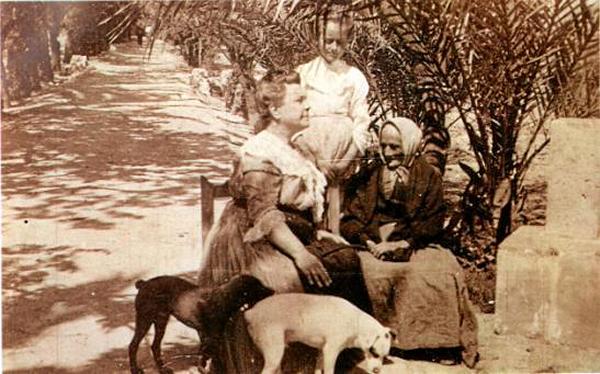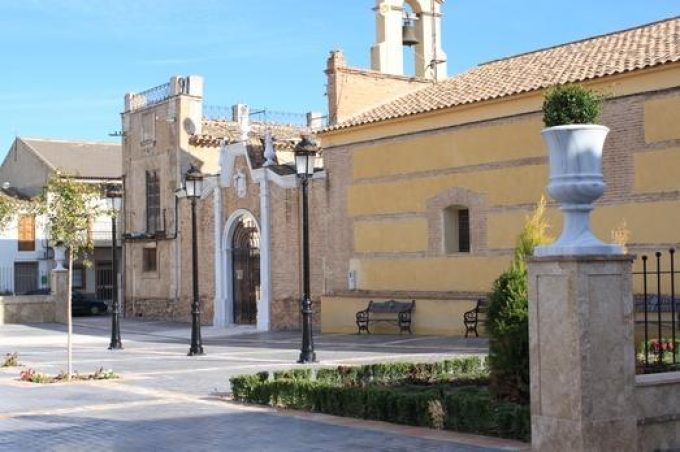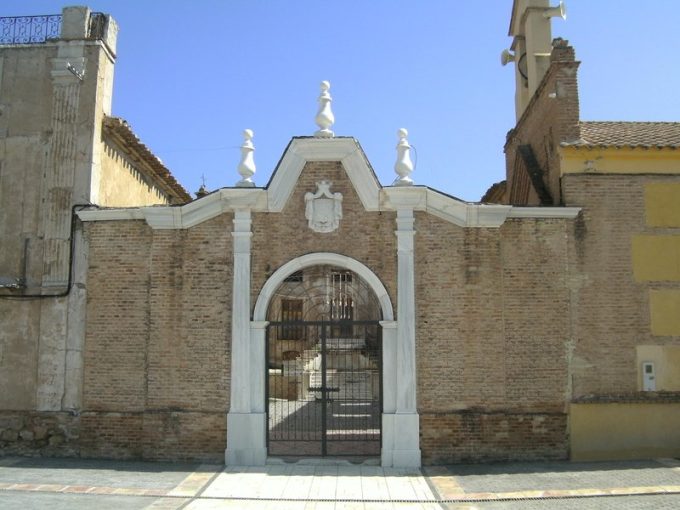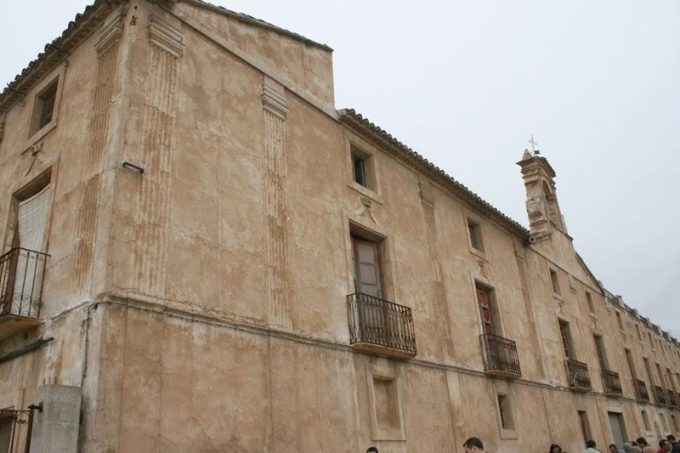The Palacio del Almanzora is a most outstanding neoclassical building in the province of Almería. It had its origin in the 18th century when, in the marquisate of Los Vélez, it was decided to divide its geographical area into three administrative zones.
They built the building in Almanzora and had granaries for collecting cereals, oil mills, housing areas and administrative areas, later taking advantage of the main building, as an ancestral home for the families of the Marquis of Villafranca and the Marquis of La Romana.
In the middle of the 19th century, the Palacio del Almanzora was acquired by Don Antonio Abellán Pañuelas, from Cuevas de Almanzora. In 1872 he was named Marquis becoming the first Marqués del Almanzora. This ordered to considerably expand the main building adding new dependencies and turning it into a palace, giving it the neoclassical air that was fashionable in the constructions of the time.
The Palace of the Almanzora consists of a main pavilion with two wings in square, that leave in the center a patio in honor. Both the main pavilion and the left wing, house the different rooms used for housing while the wing on the right is occupied by the chapel, which has entrance through the courtyard of honor, dispensing its rectangular floor perpendicular to the axis of the courtyard as well as the stables, the mill and other dependencies for services.
The external facade of the courtyard of honor is made of exposed brick, with white marble decoration, and in the center, a semicircular arch on pilasters framed by similar elements. A broken cornice lines its entire profile. In the center is the coat of arms of Abellán, which consists of a mantle that hangs the shield of Carlos III.
The interior of the Palacio del Almanzora that was entered through a door of solid carved wood was a large hall through which it was passed to the rest of the rooms. Some rooms retain many decorative elements such as painted skirting boards imitating the texture of the marble, cheerful colors on the walls and ceilings with different designs.
A STORY ABOUT THE PALACE OF ALMANZORA
By Miguel Angel Alonso Mellado
On the 13th April 1914, she who had been the “Bread of the Poor” of the Levante and Almanzora for half a century died in her palace in Almanzora.
The local elders used to say that when the Marquis of Almanzora arrived at the village on one side, the Marquesa left on the other. A joke that has been remembered for decades and which served to describe the impetus of one of its most illustrious neighbours.
Catalina Casanova y Navarro (Cuevas del Almanzora, 1831-1914), Countess of Algaida and Marquise consort of Almanzora, exuded power and generosity in equal measure. She was the town’s marquise for the residents of the Cantorian neighbourhood and of the valley that gave its name to her title.
The echo of her charitable actions resounded from one corner of the Almanzora basin to another every time Catalina visited one of her estates spread between the Levante and the Almanzora.
From Cuevas del Almanzora to Tíjola, everyone knew about the Marquesa. In 1901 she distributed 3,000 loaves of bread in Garrucha (where the church reserved a chapel for the Marquises) for needy families. Together with the all-powerful Marquis, Antonio Abellán Peñuela, she also gave the land for the construction of the railway station, which would later become one of the busiest in the province.
Generosity and influence. Similarly, the Marquise bought the shelves for the Physics and Chemistry department of the school in Cuevas del Almanzora, which cost her 2,000 pesetas, a not inconsiderable amount. Although if there was one thing the Marquise had plenty of, it was generosity… and money.
It was stipulated that the couple could earn 25,000 pesetas a month. A fortune for the years between the 19th and 20th centuries.
Because, in spite of everything, the Marquise was a noblewoman. Just a few years before Coco Chanel appeared and when few knew about Parisian fashion, Catherine was already travelling to the French capital to wear the latest fashions. She had to dazzle at the balls attended by high society, which she held at her palace in Calle Leganitos, Madrid. Their relationships with influential people and their will allowed them to make Almanzora and its valley a little less poor. Not to say that they played a key role in the development of the region.
Of course, if anyone was looking forward to the visit of the Marquise, it was the younger ones. During her stays at the Almanzora Palace, the Marquise would hand out sweets and refreshments from a balcony to the children who crowded below.
She did so from a balcony that hid the Salón de las Conspiraciones behind her back. Living up to his name, in this room the Marquis blessed or overturned political appointments. But these four walls kept more secrets, such as the meetings in which the Marquis managed to get the train to reach the Almanzora instead of Los Vélez, with all that this meant for the development of mining in the Valley. He even managed to change the route so that it would pass in front of his palace instead of Albox. Literally. All in the same room from whose balcony the Marquise gave gifts to her countrymen, a portrait of the role that each spouse played effectively.
One in control of political and economic power, the other distributing a good part of the income in charitable works and donations for education and health, since until her death she supported the hospital of Cuevas del Almanzora with 250 pesetas a year.
The Marquesa de Almanzora supported the hospital in Garrucha for many years and the support of all the poor of that municipality where she always liked to spend the summer in her house on the Malecón, as well as the extension of the school of the Siervas de María in that town.
Charity. The people of Cuevas remembered for a long time the help he gave to the victims of the floods of 1879. His actions also included investments to maintain the monumental heritage in the villages of the Marquisate. Such was the influence of the first Marquises that their power brought about Napoleonic scenes in the village of Cantoria.
It was not the Pope who came to crown the Marquis, but it was the Bishop of Almería himself, Vicente Casanova, who confirmed his sons in a religious celebration in the Palace.
Today, 13 April, is the 110th anniversary of the death of the Marquise. The oblivion of her leading role for decades in the development of the region and part of the province is obvious. The ceilings and walls of what was once her house and is now the most important neoclassical monument in the province are falling down. No one is doing anything to stop it. Perhaps a new Catalina Casanova is needed to prevent the disaster.
The Marquise was lady-in-waiting to the wife of King Amadeo I of Savoy during her husband’s reign.
I always like to tell a little joke about the “Marquesa” as she was known in the area. Let’s go to ….
It was September 1892, just a year after the floods in Albox in which the Marquise donated 500 pesetas. In Albox there was a family, that of Antonio Torres, and when the Marquise found out that this man was ill and at that time could not work, and that he had a young son who was deaf and dumb, she went to visit this family in Albox and told the father that if he wanted, she could take care of the child’s upkeep and education, as well as a donation to alleviate the dire economic need that this family from Albox was going through and thus alleviate a little of the misfortune that had befallen this good family.
This is just one of the many gestures made by this great lady of Almería, Doña Catalina Casanova Navarro, who we continue to remember no matter how many years go by. By the way the photo is taken at the Pino Real de Pulpí estate owned by the Abellán family, the photo is courtesy of Juan Grima Cervantes.









Comments 0